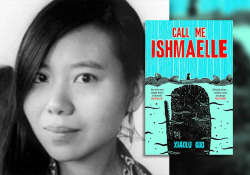Poetry and Food
 The introductory notes to Quesadilla and Other Adventures (Hawakal Publishers, 2019), edited by Somrita Urni Ganguly, lay the ground plan for the anthology. “Food is history,” writes Ganguly. “Food is memory. Food is economics. Food is science. Food is sociology, anthropology, drama, poetry, and art. Food, indeed, is a universe in itself.” The ways literature is an interdisciplinary affair are also delightfully implied in the nature of this collection. “Food has been at the center of our literature since the time we began recording our thoughts,” the editor opens. All across the world, food has evoked odd and mysterious symbolism while teaching the art of gratitude. Ganguly further notes how much strife is waged over food in today’s world. This is the important context of the collection, she tells the reader.
The introductory notes to Quesadilla and Other Adventures (Hawakal Publishers, 2019), edited by Somrita Urni Ganguly, lay the ground plan for the anthology. “Food is history,” writes Ganguly. “Food is memory. Food is economics. Food is science. Food is sociology, anthropology, drama, poetry, and art. Food, indeed, is a universe in itself.” The ways literature is an interdisciplinary affair are also delightfully implied in the nature of this collection. “Food has been at the center of our literature since the time we began recording our thoughts,” the editor opens. All across the world, food has evoked odd and mysterious symbolism while teaching the art of gratitude. Ganguly further notes how much strife is waged over food in today’s world. This is the important context of the collection, she tells the reader.
It is true that food can be politically persuasive. For instance, the jazz number “Strange Fruit” sung by Billie Holiday contains a disturbing metaphor. The opening lines follow:
Southern trees bear a strange fruit
Blood on the leaves and blood at the root
Black bodies swinging in the southern breeze
Strange fruit hanging from the poplar trees
These lines incidentally echo the Christina Rossetti poem cited as an epigraph. “Goblin Market” strives as allegory to instruct the reader, but what is being said ultimately? Elizabeth K. Helsinger writes, “When Lizzie and Laura step from home into the male marketplace of Rossetti’s poem, they cross a fictive but strongly invested boundary separating not only serious poetry from nursery rhymes but also moral from economic space, private from public, ‘natural’ creativity from the alienated labor of capitalist production, and—underwriting and sustaining these distinctions—female from male. Victorian culture acknowledges only one figure who transgresses this boundary—the prostitute.” However, Sean C. Grass writes that Rossetti’s poem should be restored to the context of her work as a whole. He writes that “Goblin Market” is “the poet struggling to resolve her intense Tractarianism with both her love of nature and her tendency toward a Pre-Raphaelite embracing of detail and abundance.” Before this collection even begins with its variety of poems, we are already posed with subtle questions.
It isn’t the task of the anthologist to answer questions posed by his or her selection. A question leads to more reflections, and questions themselves contain criteria that suit the nature of the answers. Questioning is never fulfilled, and neither are our appetites.
In a metaphorical sense, “Strange Fruit” cannibalized its performer.
According to The Progressive, the song “Strange Fruit” angered the white community and authorities. The Federal Bureau of Narcotics interfered with Holiday’s treatment for heroin addiction, ultimately destroying her life. In a metaphorical sense, “Strange Fruit” cannibalized its performer.
It is odd that fruit can be so horrific. The poem “Banana Flower,” by Sumana Roy, borrows a sense of horror to inform context. For instance, the opening lines:
It arrives on my plate like a patient.
Its appearance the colour of hurt knee,
the peanuts in it like broken headlights,
the coconut scrapings unwound bandages.
This poem is not only political in dimensions, but it unequivocally embodies ecopoetics. We cannibalize Nature and in this sense are at war with it. “So much is washed away: stickiness, generations, / the surprise of births.”
Not all the included poems concern fruit. The food poetically rendered is from all over the world and includes meat, cheese, vegetables, and sweets. However, if you are seeking a specific school of poetics you will not find it here. These poems place food within a variety of contexts and specified regions in a world where 10.7 percent of humanity is undernourished. Battles are waged between Muslim and Hindu over the eating of meat in India, and climate change threatens the ecosystem, especially underdeveloped regions. A celebration of the joy of eating is worthy of note. However, not all the poems contain serious metaphorical content. Giti Chandra writes “How Cooking Almost Killed the Cat,” in which a fallen cat’s loss of life is blamed on everyone but the poet. The poet Atar Hadari’s “Cannibals” approaches the symbolism of food from such a humorous, yet sensual, angle. These lines stand out as the most amusing:
and met in the middle of his ass
with a chocolate kiss.
The poem’s subject is a “Chocolate Tony,” a brand-name chocolate that strives for fair trade by buying cocoa beans from farmers directly to combat child slavery. Although the subject matter is humorous, it is deftly ironic. While child laborers are exploited in Ghana and the Ivory Coast, we can combat the practice by eating “fair trade” chocolate. These games begin after leisure watching of a bad romantic show. The cynicism is carefully balanced with an exotic humor.
The cover of Quesadilla and Other Adventures is a tasty image of the pouring of ghee (clarified butter). Kiriti Sengupta’s poem about ghee, “Clarity,” invokes a symbolic relationship between the creation of food and memory. These lines: “So organic is my memory— / The granular residue lifted us to heaven / Ah! Pious ghee, and incorrigible” brings a religious face to food. There are a variety of religious rituals invoking food as a central motif. In Catholicism, the ritual of communion involves a wafer that represents the flesh of Christ. The ritual intends to remind the believer of the sacrifice made by Christ and to imitate the Last Supper where Christ said, “Take, eat; this is my body” (Matthew 26:26, KJV). Such words contain magical power in invoking gratitude, love, and cheerfulness. Christ offers his disciples a meal in companionship the night before he is betrayed and taken to his death.
Sengupta’s other poem, “Masala Muri,” leaves the reader with a sense of watchfulness. This short moment in personal history is a reflection of culture.
On every stormy Sunday
we invariably had power cuts,
and Baba cooked dinner for
us all:
a moderate serving of Muri mixed with
onion, ginger and blobs of oil.
On such occasions we used to sit close,
facing each other we shared our stories;
from airing endless grievances on our barren
curriculum, the dialogues on the utility
of learning Sanskrit,
to refuting Ma’s advice on being courteous
even to strangers we would meet.
Our room shined in kerosene lamps!
Sans technology, the family creates a circle for storytelling. They share their stories together. During these moments there is bonding and celebration of food. The feeling of warmth and care is still within the poem even if they are without human-created light. The intimacy between each person, the sense of personal community, is greater because of shared bonds and enjoyment. The kerosene lamp’s evanescent glow creates a deeply private sense beyond the ordinary. Humans have told stories for entertainment and survival throughout their long and convoluted history. The moments portrayed in the poem grant a feeling of our ancient past living within us.
Madhu Rahgavendra celebrates a different aspect of ritualism in his poem “Amin.” Amin is a porridge prepared on special occasions. He writes the line, “The shaman studies the liver.” In the Torah, pigs and certain livestock were forbidden to eat. It is suggested that the foods were banned for ecological and personal health reasons. A shaman is one who is united with the spirit of Nature and thus retains a healthy balance between himself and the wider ecology. The indigenous tribes are known for their deep resonance with Nature. As climate changes and anthropogenic devastation looms, poetry of ecology is a hardened subject to approach.
The collection does not only resort to topical themes. There are deeply personal poems in the volume as well. In “Woman on a Quest for a Perfectly Round Roti Smeared with Oil & Chopped Onion,” Linda Ashok writes about her mother who struggled to make ends meet. Her celebration of her mother seems to contain an allegory of personal transcendence. Much like Sylvia Plath’s “Ariel,” Ashok writes of a woman struggling with her roles as woman. In Plath’s poem, she begins in stillness and then jets through the hooks cast at her, eventually transforming herself into Lady Godiva. Her protest is the embrace of longing, oneness with Nature’s violence and storm, and final unity with the “cauldron of morning.” The mother in the poem “rocked life / like natural calamities / were only her business.” These lines parallel the opening lines: “rocked her life swinging / from one end / of the mountain / to the other.” Psychic wholeness is symbolically measured in the lines “except in those evenings / when the rotis wouldn’t make / a perfect circle” where the mother loses her sense of self for being unable to provide. However, like Plath (“the dew that flies / Suicidal at one with the drive”), mother “would drop a tear / but get to the job nonetheless.” The poem is deceptively situational, but life’s situations are often poetical. This poem reminds us of life’s essential purpose. No matter what is thrown at you, you are more than a unit in the peace of being. You are part of a larger network with responsibilities.
The political elements of the collection are a protest against infringing on another’s choice of sustenance when food is a blessing.
The poems in this collection are appetizing and remind us of the complexities of the simplest things. We can’t afford to take food for granted if we are lucky to have it. In a sense, the political elements of the collection are a protest against infringing on another’s choice of sustenance when food is a blessing. The international scope of the anthology, ranging from India, the United States, Iceland, Spain, Poland, England, and Nigeria, shows us how connected we are and explores the ways this connection is possible. Using imagery, situation, history, ritual, and humor, these poems tell a story beyond the common act of consuming we take for granted. The cultural specificities of the poems and their choices of subject are somewhat offsetting for the uncultured (or region-specific) reader, but footnotes offer insight into their backgrounds. The collection is not only commentary as such but also a wonderful place to garner insight into foods and customs across the world.
With a richly appetizing cover image, the anthology invites you to partake in a feast. Poems are food for the soul, as it is said. The power of poetry is its ability to transcend borders. One thing this anthology accomplishes is using a narrow topic to explore the inner complexities of life. Food is a universal gift. No culture can do without it, but it is one we so often take for granted.
Houston















